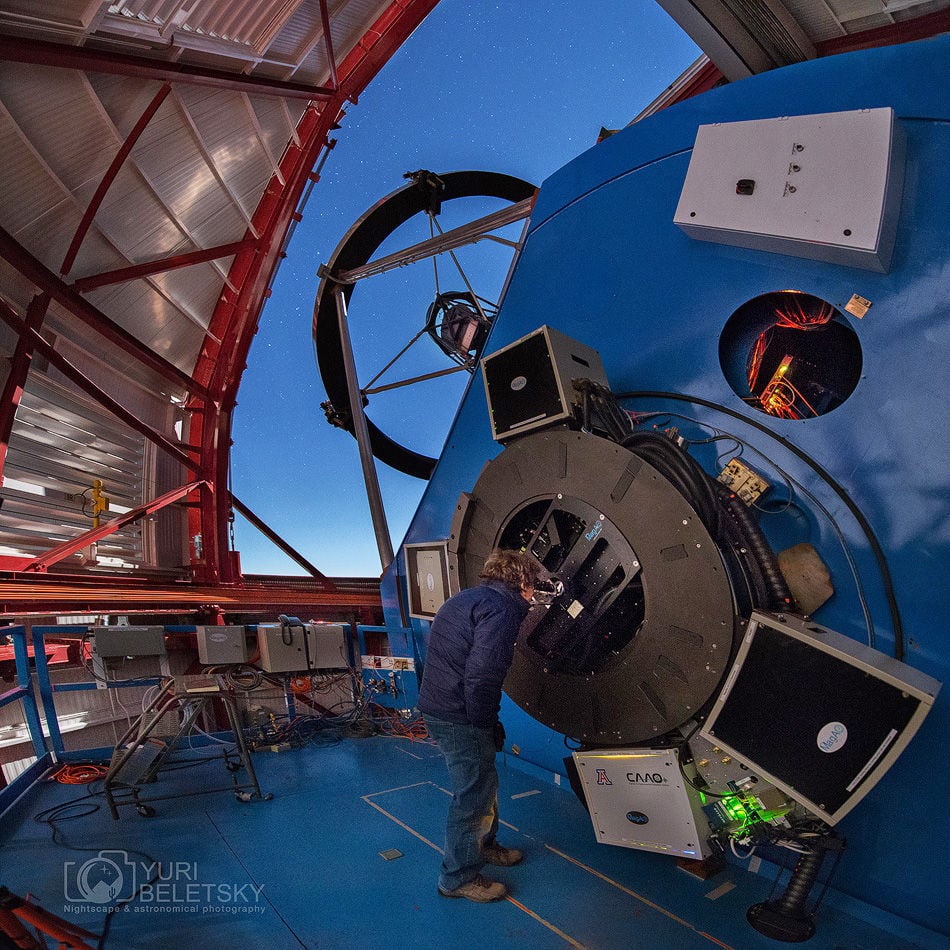The NASA photo of the day for Thursday, May 7, 2015, shows a guy looking through a telescope, which doesn’t seem all that amazing, until you know the details.
University of Arizona astronomer Laird Close is using an eyepiece on the 6.5-meter Magellan Bade Telescope at Las Campanas Observatory in Chile to observe the binary star Alpha Centauri.
Close and his team have spent the past decade crafting an adaptive-optics system for the telescope. At its heart is a deformable mirror, made by Italian colleagues at Arcetri Observatory in Florence, that compensates for the blurring effects of Earth’s atmosphere.
The result is an image at the “diffraction limit” of the huge telescope. It’s the same view you would get from a space telescope, with no atmospheric blurring — except that no space telescope has a mirror this large.
Usually, this image would be recorded by a high-tech camera and viewed on a computer screen, but the team in Chile had just set up the system for this year’s run and had not installed all the instruments.
They used an eyepiece for the first observations. As Steward Observatory astronomer Jared Males describes it on the group’s blog: “We’re pretty sure that this is the highest angular resolution image ever formed on a human retina.”
“During the night, 9 people looked through the eyepiece. These astronomers are the inaugural members of an exclusive club: ‘L’Ordine degli Astronomi al Limite di Diffrazione’ (The Order of Astronomers at the Limit of Diffraction).’ ”





